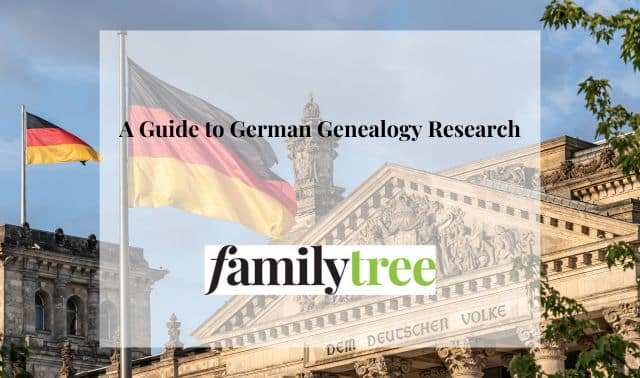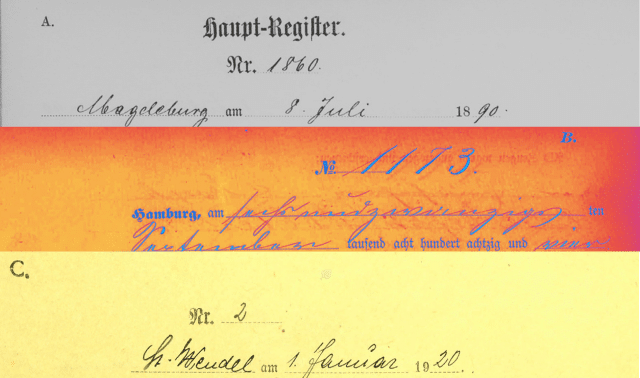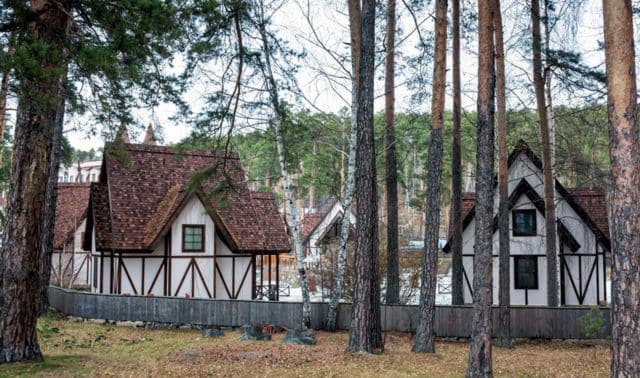Sign up for the Family Tree Newsletter! Plus, you’ll receive our 10 Essential Genealogy Research Forms PDF as a special thank you.
Get Your Free Genealogy Forms
"*" indicates required fields

Some people spend years researching their German roots without enjoying the kind of success Harold (Hal) Sterwerf had in just five months: He traced his family back 150 years to the ancestor who started it all by coming over from Germany.
It helped that Sterwerf could find so many clues right in his heavily German hometown of Cincinnati. It really helped that he hit on the importance of checking variant spellings, especially with German names. And, yes, it helped that he just plain got lucky. Nonetheless, Sterwerf’s discoveries show how checking (and later rechecking) sources, chasing leads and names that seem like long shots, and simply using common sense can take you a long way toward unpuzzling your family’s German history.
Sterwerf had always been interested in his family history, but a big family reunion and a vacation in Germany—where he met other Sterwerfs—got him started doing research. His initial question was actually less ambitious than his final results: Where did the Sterwerfs who weren’t descendants of his grandparents, William and Anna, fit into the family tree?
Trying to solve that puzzle proved addictive. “It’s almost like a narcotic,” he says. “It’s like a murder mystery—you want to know what happens next.”
Library Research
All he knew about how to tackle that mystery was what he’d learned during a genealogy mini-course at the Cincinnati Public Library. Even using the library—which had switched to computers since his college-studying days—took some getting used to: “I had to teach myself to use the library again,” Sterwerf says.
Family Records
He started his search with family records his father had left him and by asking other relatives for any information they might have. That questioning led a cousin to produce prayer cards from the funerals of a number of Sterwerfs.
“The cards were all from the same era of time as my Grandfather William,” Sterwerf says. “They had to be his brothers and sisters.”
He also guessed that since his oldest uncle was named Henry that name might have been given in honor of his great-grandfather. He went to his local branch library and found an index of wills for the county probate court. It turned out that a will for a Henry Sterwerf had been executed in 1895, when Uncle Henry would have been only in his mid-teens. So this Henry Sterwerf was probably the great-grandfather that Hal had been seeking. The appearance of two dotted i’s in his great-grandfather’s signature led to the discovery that this Henry was really Heinrich.
Census Records
Building on these clues, Sterwerf found 1870 census records listing his great-grandfather and (presumably) his great-grandmother, whose name, Mary, he learned for the first time. Both were listed as having been born in Prussia—so he had found the first clue linking his family to the Old World.
When he failed to find more census listings, he went to the courthouse to try real-estate records. Most of the Hamilton County, Ohio, records were destroyed in a fire started during a riot in 1938, but records for 1869 and 1847 survived. Finding no Sterwerfs listed, he got creative. He remembered his father telling him that his grandfather had been called “Star” and that the e‘s in his great-grandfather’s signature looked like a‘s.
Cemetery Records
Sure enough, there was a “Starwarf” on the map of real-estate holdings with a plot in the right size. Discovering which Hamilton County township Great-grandfather Heinrich’s farm was in led to the township death records, and from there Sterwerf tracked down his ancestor’s cemetery plot.
But when he drove to the cemetery, Sterwerf was in for a surprise: His great-grandfather wasn’t buried with the woman named Mary from the census, but instead with a woman named Christina and a young boy named Heinrich Conrad.
Church Records
To clear up this new mystery, Sterwerf went to the Catholic church near the cemetery. A church volunteer scoured the records for him and found marriage records for Heinrich and Mary as well as a death record for Heinrich’s first wife and mother of all of his children, Christina.
Once Sterwerf knew to look for different spellings of first and last names, he was able to find a “Henry Stasarf” in the 1880 census at a location that fit with what his own father had told him (census listings, he now realizes, frequently mangled names). Going back to the 1850 census, he found a “Henry Starwaif” married to a Christina. Finally, in a marriage record index, he found that “Herman Sternwerf” had married “Christina Schulze” (really Schulte) in 1847 in Cincinnati.
Now Sterwerf knew his immigrant ancestor was a single man when he came to America and he knew who his true great-grandmother was. He’s waiting for a copy of Heinrich and Christina’s marriage record from the Cincinnati Catholic archdiocese. Once he gets that, he’ll move on to immigration, naturalization and citizenship records to try to tie his American ancestors back to Germany.
Sterwerf hopes to take another trip to Germany. And someday he wants to write down the family history. When he does, he’ll make sure he records all the spelling variations he finds—to leave behind fewer puzzles than he inherited.




